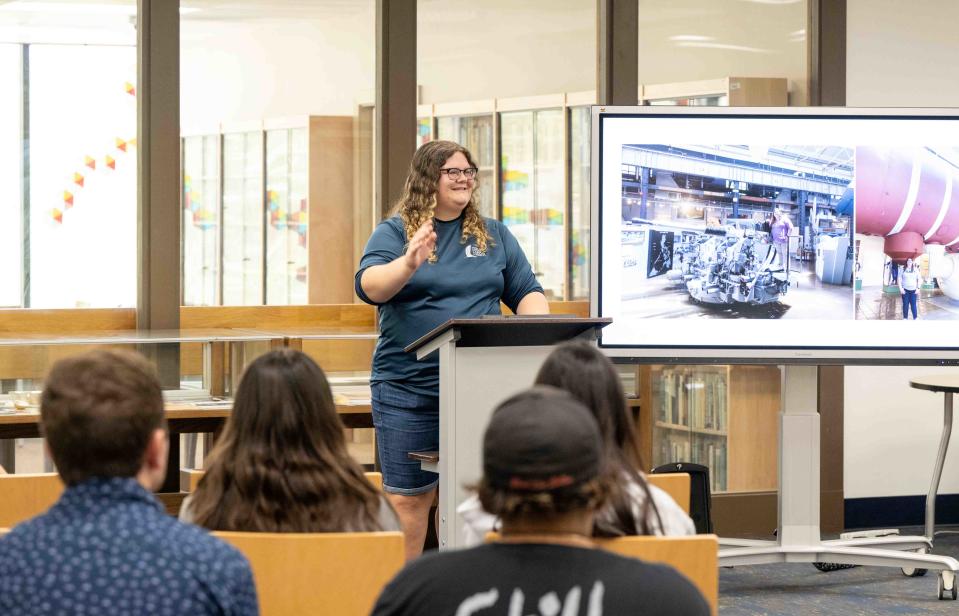Texas A&M University-Corpus Christi student awarded National Science Foundation fellowship
A Texas A&M University-Corpus Christi master's student received a National Science Foundation Graduate Research Fellowship Program award to study local sharks and rays.
Katie Gheysen is only the second student from the university to receive the prestigious National Science Foundation fellowship, which includes three years of financial support.
As a part of the university's Shark Week festivities, Gheysen shared her plans to research how sharks and rays utilize South Texas bays and estuaries during a presentation Thursday afternoon. University researchers were also featured Thursday in Discovery Channel's television programming and the Harte Research Institute hosted a shark-themed community event downtown Thursday evening.
"Our coastline is pretty unique in the sense that it's a system of bays and estuaries with a bunch of rivers that flow into our bay system," Gheysen said. "These bays and estuaries are then protected by a chain of barrier islands. Because of these, there's really, really unique habitats that are secluded from oceanic action like wave action."

Gheysen's research will focus specifically on cowhead rays, spinner sharks and bonnethead sharks in the Aransas Bay, Redfish Bay and Corpus Christi Bay and the Aransas Pass inlet that connects the bay systems to the Gulf of Mexico.
Bonnethead sharks have a rounded, shovel-shaped head and can grow to about five feet long. Spinner sharks resemble blacktip sharks and are known for launching themselves out of the water with a spin while catching fish. Cownose rays have deeply notched snouts.
"These three species are extremely vulnerable to fishing pressures because it takes a really, really long time for them to reach sexual maturity and beyond that they have very few pups per litter," Gheysen said. "So that means that if we overfish them, it's going to take way to long for them to bounce back."
By surgically placing acoustic transmitters inside sharks and rays found in the bays and tracking them through receivers placed around the bays, Gheysen hopes to determine whether these species exhibit habitat partitioning, which is when different species coexist in the same area by either separating into different sections of the area or using parts of the habitat at different times.
For example, one species might be more active in the daytime or depending on the season. If the data doesn't show habitat partitioning, the sharks and rays might instead be competing for resources.
"These movement and residence patterns are really useful for management and conservation policies," Gheysen said. "Our findings can show key areas of habitat use."
Daniel Coffey, Gheysen's advisor and assistant professor of biology for fisheries, said the university's Movement Ecology Lab focuses on why, when, how and where marine animals move in order to foster better management and conservation strategies.
"We want to make sure that we're advancing the field forward and also benefiting our local, regional and national management programs," Coffey said.
Shark Week: 10 films featuring man-eating sharks to check out
More: Community events planned for Shark Week next week
Harte Research Institute offers free program to encourage sustainable oyster farming
This article originally appeared on Corpus Christi Caller Times: Shark Week festivities at A&M-Corpus Christi include student research

